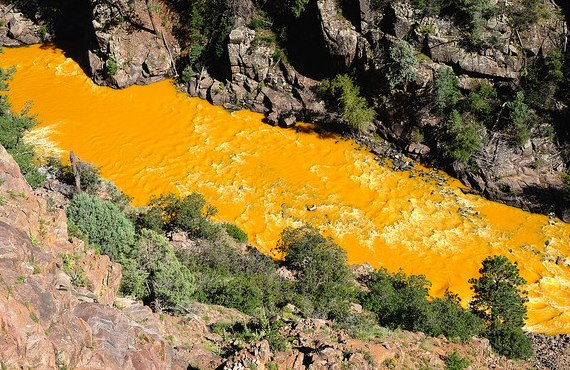
In August, the EPA attempted to clean up the abandoned Gold King Mine in Colorado. During the process, however, the mine leaked, causing 3 million gallons of toxic wastewater to spill into the nearby Animas River, which flows into New Mexico. The waste contained large amounts of heavy metals like lead and arsenic that are dangerous to human health. The spill was so bad that the La Plata county, Navajo Nation, and New Mexico declared a state of emergency.
A recent investigation into the disaster by the Interior Department found that the spill could have been averted if the EPA had done a proper engineering analysis of the mine. However, the report found that the EPA lacked the proper technical skills to perform such analysis. The EPA relies on environmental analysis instead of engineering practices, which ultimately lead to the disaster.
It is surprising the EPA did not have mine engineering experts on hand to properly assess the site. It yields one to wonder, what does the EPA do with its funding? A recent oversight report from government watchdog Open the Books sheds light on some of the EPA’s spending practices.
For the 2015 fiscal year, the EPA had a budget of over $8 billion. The oversight report found that a bulk of the EPA’s funding, approximately $5.3 billion, goes towards contracts and grants. In addition to grants, the EPA spends about $1.7 billion on salaries for over 15,000 employees. EPA bureaucrats are paid well, with an average salary of $111,165 in 2014.
Surprisingly, a large amount of EPA spending does not actually support EPA’s core goals. The EPA spends millions on Public Relations. The report finds that, since 2007 the EPA spent hundreds of millions on PR. This spending includes a whopping $143 million in salaries and bonuses for PR staff and an additional $15.1 million on PR consulting – nearly $20 million per year.
The EPA also spent more than $715 million on law enforcement since 2006. The EPA employs nearly 200 “special agents” and outfits them with firearms, surveillance equipment, and body armor. It is doubtful whether such high spending on law enforcement for an agency that regulates the environment is necessary.
With such high spending on non-core related items like PR and environmental law enforcement, it should come as no surprise some core duties of the agency have been overlooked. This incident highlights the EPA’s shortcomings and incompetency’s in this regard.
As a government agency, the EPA does not have to worry about the bottom line, which promotes efficiency. As a result, the EPA inefficiently and wastefully spends its $8 billion in taxpayer funding. If the EPA was a business, such environmental boondoggles as the Gold King Mine spill would result in harsh legal repercussions and a huge negative public reaction, leading to a major loss of profits. Yet as a government entity, the EPA does not face such consequences, meaning it could be only a matter of time before taxpayers are again footing the bill for another EPA blunder and more irresponsible spending
Photo Credit: Mor

